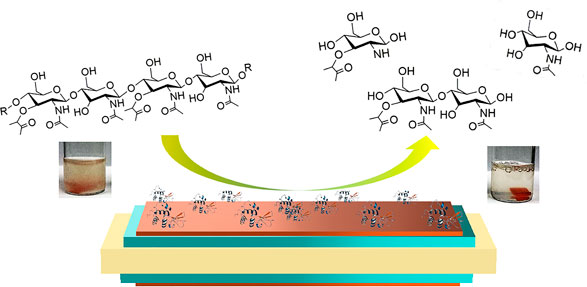Article contents
Polypropylene films modified by grafting-from of ethylene glycol dimethacrylate/glycidyl methacrylate using γ-rays and antimicrobial biofunctionalization by Schiff bases
Published online by Cambridge University Press: 29 January 2018
Abstract

The goal of this work was to provide antimicrobial activity to polypropylene by covalent immobilization of lysozyme. The first step was the grafting of ethylene glycol dimethacrylate and glycidyl methacrylate through “grafting-from” method by means of γ-rays. Then those chemical groups were activated to allow the immobilization of lysozyme by Schiff bases. The activity of lysozyme showed an improvement by the remaining double bonds from the grafting. Finally, the presence of lysozyme was confirmed by the hydrolysis of Micrococcus lysodeikticus at different temperatures, pH values, and cycles. The new materials were characterized by infrared spectroscopy, thermal analysis, contact angle, and by the surface morphology.
- Type
- Research Letters
- Information
- Copyright
- Copyright © Materials Research Society 2018
References
- 8
- Cited by



